Edition 11 – June 2019
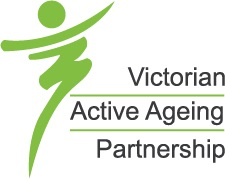
VAAP UPDATE
VAAP regional seminars a great success | VAAP 2019 Research and Practice Forum | VAAP Project Advisory Group continues to play a key role | Building networks and partnerships | Models and strategies to engage carers in physical activity
STAKEHOLDER SPOTLIGHT
Increasing walking by having ‘places to rest’ | ‘Living Longer, Living Stronger’ (LLLS) going national | Woowookarung Regional Park – A park for the people, by the people | Successful ‘come and try’ walking football in City of Maroondah | A great outreach model working well | National Heart Foundation’s Walk Wise Program
RESEARCH UPDATE
Social isolation is associated with lower physical activity in older adults | Sustaining the engagement of older people in falls prevention exercises | The benefits of dance for fitness and well-being in older people
STAY IN THE KNOW
Sport Australia’s physical literacy resources | Interesting physical activity program for older people in the UK | Indigo Shire ‘Ageing Well’ policy | Victorian Minister for Disability, Ageing and Carers | Do you know about AAA Play? | Information and advice on muscle, bone & joint conditions
UPCOMING EVENTS
VAAP 2019 Research and Practice Forum
VAAP Update
VAAP regional seminars a great success
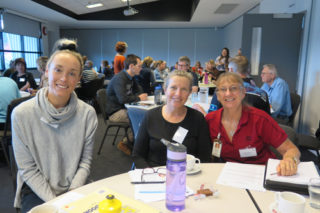 Between end of March and May 2019, the Victorian Active Ageing Partnership (VAAP) Coordination Team delivered six regional seminars across Victoria. The seminars were held in Warragul, Stawell, Benalla, Bendigo, Camperdown and Bairnsdale.
Between end of March and May 2019, the Victorian Active Ageing Partnership (VAAP) Coordination Team delivered six regional seminars across Victoria. The seminars were held in Warragul, Stawell, Benalla, Bendigo, Camperdown and Bairnsdale.
The focus of the seminars was ‘Getting Older People Active’ and involved presentations from members of the VAAP Coordination Team, local services providers and seniors participating in local activities. Resources and tools developed through the four years of the VAAP formed the main focus of the presentations. The VAAP Coordination Team was very grateful to the Department of Health and Human Services’ Active and Healthy Ageing Advisors for providing local input into the organisation of each of the seminars.
A total of 316 attendees participated in the seminars across the six locations. Service providers from the organisational settings that have been the principal target audience of the VAAP were represented at the seminars. These included staff and volunteers from local councils, community health services, neighbourhood houses, U3As, fitness/leisure centres, sport associations/clubs, as well as other community and seniors organisations. Some private exercise providers were also in attendance.
While many seminar participants were familiar with the VAAP, many were engaging with, and hearing about, the VAAP for the first time. Because of this, the seminars were a great opportunity to reach service providers in regional areas and to introduce them to the resources and tools that have been developed through the life of the project.
The feedback from all the seminars was very positive with more than 90% of respondents indicating that they agreed or strongly agreed that the seminars met some of their professional needs and that the knowledge they gained was relevant to their work. The great majority also indicated that they would aim to incorporate some of the learnings from the seminar into their work.
VAAP 2019 Research and Practice Forum
The date of Thursday 29 August is confirmed for the 2019 VAAP Research and Practice Forum. The theme for this year’s Forum is ‘Communication, older people and physical activity: Giving and receiving the message’. The Forum will be held at the RACV Club in Melbourne. BOOK NOW
VAAP Project Advisory Group continues to play a key role
The VAAP Coordination Team wishes to acknowledge the continuing, great work by the VAAP Project Advisory Group, which consists of a range of stakeholder representatives. The Project Advisory Group provides advice and guidance to the VAAP Coordination Team. READ MORE
Building networks and partnerships
A central objective of the VAAP has been the development of partnerships to promote older people’s awareness of, and engagement in, physical activity opportunities in their local area. The evidence reviews and field research undertaken in the first three years of VAAP have highlighted the multiple ways that partnerships support program promotion, referral, accessibility and tailoring. Because of this, a focus of VAAP in Year Four is building the capacity of providers of physical activity programs for older people to establish and sustain successful partnerships.
The VAAP initiative in 2019 aims to increase and strengthen partnerships that providers of physical activity programs for older people have in place that support the reach and quality of their activities. This is being achieved by:
- raising awareness of elements of programs that could be enhanced through partnerships;
- improving understanding of the attributes of successful partnerships;
- increasing knowledge about the range of suitable organisations that partnership links could be built with, and;
- developing skills in partnership initiation, operation and maintenance.
Two strands of activity in 2019 are being undertaken to meet the above objectives. The first is the identification of attributes of successful partnerships to engage older people in physical activity programs. This involves a broad review of published and unpublished literature about partnership formation and maintenance; a Delphi consultation with a cross-section of providers of physical activity programs for older people about the relevance and importance of different factors in successful partnership work, and; interviews with a selection of program providers to compile case studies of partnerships that they are engaged with.
The second strand of activity will focus on dissemination and capacity building, utilising the insights gained from the background research. A presentation of the findings of the networks and partnerships research was provided at each of the six VAAP regional seminars. This was followed by discussion aimed at identifying opportunities for local partnership development. A best practice guide on networks and partnerships for providers of physical activity programs for older people will be developed and disseminated, as will a series of short training videos about successful partnership work.
Further information about this work will be provided as it progresses, so stay tuned!
Models and strategies to engage carers in physical activity
One of the initiatives in Year Four of the VAAP is the development of resources for relevant service providers re: models and strategies to engage carers in physical activity.
This is in line with Priority 1 of ‘Recognising and supporting carers: Victorian carer strategy 2018-22’ that focuses on carers having better health and wellbeing. The relevant priority action for this strategic priority states:
‘Increase the opportunities for carers to participate in physical and social activities and programs through revising the Support for Carers Program guidelines and including carers in the Victorian Active Ageing Partnership.’
The first stage of this initiative has entailed a review of published and grey literature concerning models and strategies to facilitate physical activity participation among caregivers. A thorough search of online databases lead to the identification of several systematic and narrative reviews, and a limited number of primary intervention studies and project evaluations. The emerging consensus within the literature is that physical activity is beneficial for reducing stress and improving mental well-being and coping among carers. The approaches reported on include: education and counselling to promote home-based physical activity; guidance and supervision of physical activity routines that carers can undertake with the person that they are supporting; group-based physical activity programs for carers; and carers’ support programs that incorporate physical activity alongside education, peer support and other activities. The articles collected are currently being read and summarised.
The second phase of this project will entail collection of case studies of different types of physical activity programs that are provided for older carers in Victoria. It is anticipated that this work will take place between June and September.
Stakeholder Spotlight
Increasing walking by having ‘places to rest’
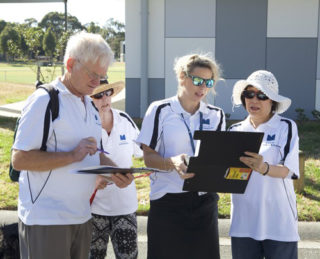 You may have recently seen a senior or two, walking along the streets of Monash with a clipboard writing notes. Monash Council is developing a policy called ‘Places to Rest’, with the goal of increasing the amount of walking within the municipality.
You may have recently seen a senior or two, walking along the streets of Monash with a clipboard writing notes. Monash Council is developing a policy called ‘Places to Rest’, with the goal of increasing the amount of walking within the municipality.
To increase participation in walking, it is essential to have places where walkers can sit, to enjoy their surroundings or catch their breath. Members of the Monash Positive Ageing Reference Group (PARG), which includes residents of Monash, a Councillor and three council officers, have been assessing Monash for places that need more seating to provide walkers with suitable ‘places to rest’.
The City of Monash was divided into 31 rectangular blocks and members of the PARG drove and walked through their allocated areas to record the current seating. They also made recommendations about maintenance for existing seats such as fixing loose planks and damage and painting. My own experience, in the areas of Burwood and Mount Waverley, has been very positive indeed. I have met a lot of friendly locals and seen a correlation between the numbers of walkers and the amount of seating.
Valley Reserve is a great example of the benefits of this project. It has about a dozen seats that are all well used. Some are along the walking tracks, and others are near the playground. Mount Waverley Shopping Centre is also a good example, with several new seats and benches installed to augment the older ones. These are also very well used.
The audit has highlighted that Monash has some large reserves, but also many smaller and even really tiny reserves, which can be places to rest if they have a seat. One very tiny green space on Doynton Parade in Syndal provides a well needed seat and place to rest on a small triangle of grass which must be a welcome sight for walkers climbing up the steep hill from Syndal station.
The mapping will assist Monash Council to plan for new ‘places to rest’ and to upgrade or maintain existing ones.
This article was submitted to the VAAP newsletter by Mark Learmonth, Monash resident and member of the Monash Positive Ageing Reference Group.
‘Living Longer, Living Stronger’ going national
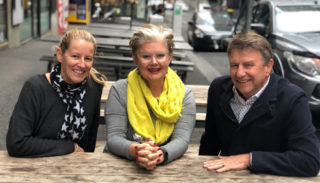 The World Health Organization recommends two sessions a week of strength training for people over the age of 65. This is to counter the loss of strength that we all experience as we age, as well as to assist with our balance, flexibility and bone density. COTA Victoria has been promoting this message for almost 20 years through its ‘Living Longer, Living Stronger’ (LLLS) program and has been endorsing fitness centres and community sites to provide age friendly strength training sessions across the State of Victoria. COTA WA and COTA SA have also been providing similar programs for over 15 years.
The World Health Organization recommends two sessions a week of strength training for people over the age of 65. This is to counter the loss of strength that we all experience as we age, as well as to assist with our balance, flexibility and bone density. COTA Victoria has been promoting this message for almost 20 years through its ‘Living Longer, Living Stronger’ (LLLS) program and has been endorsing fitness centres and community sites to provide age friendly strength training sessions across the State of Victoria. COTA WA and COTA SA have also been providing similar programs for over 15 years.
In 2018, COTA Australia made an application to Sport Australia to run the program Australia wide. The successful submission will see the program progressively rolled out across Australia and the current state providers resourced to enhance their programs. Research highlights that only 15% of people are involved in strength training activities that improve the health of the individual.
Here in Victoria we will see a number of important changes over the next two years to the program that will aim to lift involvement well beyond the current 15%. These include:
- a well resourced marketing campaign highlighting the many benefits of strength training;
- an improved program that encourages and enables people 50 plus that have a chronic disease/and or complex care needs to access the program through an entry level (Tier 1) service;
- more training for LLLS Instructors ensuring the highest quality programs are being delivered at the local level;
- an increase of sites from the current 80 to over 100 across Victoria by the end of 2020.
To deliver this enhanced program, COTA Vic has assembled a new staff team to ensure the program improvements are delivered and that many more Victorians enjoy the numerous health benefits of strength training. The new LLLS team is Kerry Galbraith (left) Michelle Wright and Jonathan Pietsch. If you would like to know more about the program, visit COTA Victoria’s website COTA Vic Strength Training Program or call 03 9655 2143.
This article was submitted to the VAAP newsletter by Jonathan Pietsch, Special Project, LLLS and Social Enterprises, COTA Victoria.
Woowookarung Regional Park – A park for the people, by the people
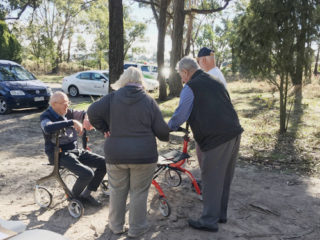 Through the efforts of local activism to protect a large forest area from becoming housing, Woowookarung Regional Park is set to provide the platform for fantastic health and wellbeing outcomes for Ballarat and the broader regional community.
Through the efforts of local activism to protect a large forest area from becoming housing, Woowookarung Regional Park is set to provide the platform for fantastic health and wellbeing outcomes for Ballarat and the broader regional community.
Woowookarung Regional Park is a new 461 hectare park four kilometres from the centre of Ballarat. The park was secured through the efforts of the community, particularly the Friends of Canadian Corridor, to preserve this great place to benefit people now and for future generations and to protect its important cultural and environmental values. The park’s reservation is an important expression of community participation, organisation and strength.
The park sits within the lands of the Wadawurrung people and the name ‘Woowookarung’ means the ‘place of plenty’ in their language. This denotes the importance of this place to the Traditional Owners and their ongoing connection to Country.
Parks Victoria manages the park and has delivered a strategic directions plan through a community-led process to guide development of the park. This has set the aspirations for the park to become one of the first ‘health’ focused parks. A ‘Healthy Parks, Healthy People’ activation plan has also been developed which identifies opportunities to work in partnership with the community, council, health sector, licensed tour operators, and other agencies such as DHHS, to provide programs to encourage people to be healthy in nature. A Healthy People Project Coordinator has also been engaged to facilitate these partnerships and programing of the park.
One of the first projects to be delivered with a health focus is a Dementia Friendly Forest Sensory Trail as part of a 10,000 Steps (health) Trail. It is a very exciting process with Parks Victoria working in partnership with Dementia Australia, local dementia patients and their carers and the health sector to design a dementia friendly forest trail. Standards for the trail will also be developed and become part of Dementia Australia’s suite of standards for dementia friendly design. The trail is currently in design and planned to be delivered towards the end of 2019. Further information on Woowookarung can be found on the Parks Victoria website: engage.vic.gov.au/woowookarung-ballarats-new-regional-park
This article was submitted to the VAAP newsletter by Clare Johnston, Regional Project Coordinator, Woowookarung Regional Park, Parks Victoria.
Successful ‘come and try’ walking football in City of Maroondah
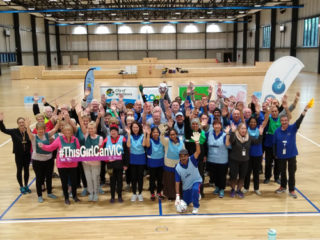 It was a chance encounter at the 2018 VAAP Research & Practice Forum that introduced Richard Joseph, Active & Healthy Ageing Coordinator at Maroondah City Council to walking football (soccer).
It was a chance encounter at the 2018 VAAP Research & Practice Forum that introduced Richard Joseph, Active & Healthy Ageing Coordinator at Maroondah City Council to walking football (soccer).
Walking football has been a fast growing sport in the UK and Europe since 2001 and has inspired men and women over the age of fifty to be more physically active. Walking football is a modified version of football or soccer that involves no running, no kicking the ball above shoulder height and no tackling.
Research on the health and well being of older people identified that within the Eastern Metropolitan Region, 40% of people aged 60–69 years and 28% of people aged over 70 do not meet the National Physical Activity Guidelines for Australians of 30 minutes per day of moderate intensity. Since walking was the most preferred physical activity type, walking football was therefore identified as an activity that could help increase the physical activity of older persons and in addition, combat social isolation.
A partnership approach was discussed and first developed with Glen Wall from U3A Victoria and Croydon U3A to sustainably run the program and Melbourne City Football Club to deliver it. This partnership attracted Knox City Council and Knox U3A as well. A working group was formed to plan for a Launch/Come & Try Day on 30 May 2019 at the newly built Maroondah Nets sports facility in Heathmont, as well as host a Friendship Tournament to demonstrate the game. Whittlesea Council and Whittlesea U3A lent their expertise given they have been running walking football since 2015.
This initiative has been a success, not only in the huge response from older people within the community, but also in the partnership and innovation in the provision of physical activity opportunities for older people, particularly those from disadvantaged groups and those who are isolated and lonely. Discussions are underway in Maroondah Council for other accessible sports like walking netball and walking basketball to provide further exercise options for older people.
This article was submitted to the VAAP newsletter by Richard Joseph, Active & Healthy Ageing Coordinator, Maroondah City Council.
A great outreach model working well
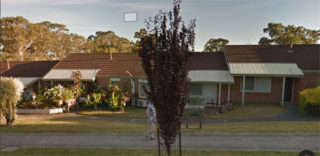 A mapping exercise was undertaken by the Department of Health and Human Services (DHHS) South Division Active and Healthy Ageing Adviser, Denise Olsson, to determine the number of local public housing sites with a community facility.
A mapping exercise was undertaken by the Department of Health and Human Services (DHHS) South Division Active and Healthy Ageing Adviser, Denise Olsson, to determine the number of local public housing sites with a community facility.
Denise found that 13 of the 29 public housing sites in the South Division had community facilities but were hardly used. The majority of tenants in these facilities were recipients of either the pension or other form of government financial support and are generally disadvantaged, socially isolated and experiencing a range of mental health and other health related issues. Some tenants also didn’t know or interact with each other.
Denise saw these under utilised facilities as a great opportunity for neighbourhood houses to provide some of their activities at these sites to increase the health and wellbeing of both tenants and community members. After facilitating access to the facility and engagement with tenants, Highett Neighbourhood Community House (HNCH) and Doveton Neighbourhood Learning Centre (DNLC) have been using the public housing facilities to undertake activities with residents.
HNCH is working with the residents of the Ludstone St public housing estate. HNCH has negotiated eight hours of service delivery on the Estate with local stakeholders, including a weekly exercise class, fortnightly library service, weekly U3A class, and conversation classes. Monthly afternoon teas are a feature and this will lead into monthly community meals in winter.
Bellview Estate in Eumemmerring is a public housing site with most residents aged 65+ years. Tenants are socially isolated and experience a range of health related issues. The DNLC started working with tenants following a request from two residents who felt very socially isolated and unable to attend activities at the DNLC due to limited mobility. The tenants had also reached out to DHHS for support.
Initially DNLC ran a series of fortnightly morning teas, brunches and BBQs over six weeks to provide the opportunity for people to come together, find out about the DNLC and most importantly, tell them about their interests, skills, and needs. At each of these events between 22 and 26 people attended. Following consultation with the residents, games, craft and gentle exercise were offered. These weekly activities continue to be well supported by residents, with some of the participants coming from the surrounding community.
Projects in ‘55+ years’ public housing community facilities have far-reaching benefits to the tenants and the wider community that include:
- decrease in social isolation for public housing tenants
- increase in the health benefits for public housing tenants
- activation of an unused community facility to benefit both public housing tenants and the local community
- support to a Neighbourhood House to meet the needs of disadvantaged community members
- increase in programs and activities to the general community.
There are public housing sites with community facilities around the Victoria and they provide a great resource for reaching many older people, who would otherwise remain socially isolated and physically inactive.
This article was written in conjunction with Denise Olsson, Department of Health and Human Services (DHHS) South Division Active and Healthy Ageing Adviser and Melanie Tighe from Highett Neighbourhood Community House.
National Heart Foundation’s Walk Wise Program
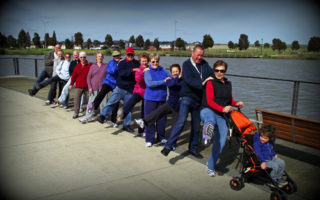 A new Heart Foundation physical activity project aimed at those aged 65 and over has been awarded a ‘Move It AUS – Better Ageing’ grant from Sport Australia.
A new Heart Foundation physical activity project aimed at those aged 65 and over has been awarded a ‘Move It AUS – Better Ageing’ grant from Sport Australia.
Currently only one in four Australians aged 65 and over are sufficiently physically active for good health, putting them at risk of heart disease, stroke and type 2 diabetes, as well as some cancers and mental illness.
The National Heart Foundation’s Walk Wise Project is a three-pronged approach encapsulating individual, social and environmental factors. The project will be delivered over the next two years. Walk Wise will encourage older Australians to walk more often by:
- built environment: advocating for walk-friendly street and communities;
- education: providing public and professional education on the link between public health, walking and the built environment, also health promotion about benefits of physical activity; and
- walking: boosting physical activity rates among older Australians through connections to the Heart Foundation community-based walking program.
The Heart Foundation has extensive knowledge and experience in improving Australia’s health through physical activity. Its Active Living team already advocates for ‘built environments’ – streets, neighbourhoods, towns and cities – that provide all Australians with opportunities to lead active and healthy lives.
In addition, Heart Foundation Walking has been encouraging Australians to walk for the last 23 years, helping over 100,000 people to incorporate walking into their everyday lives. Heart Foundation Walking is Australia’s largest free walking network, and currently has over 56,000 registered walkers. The program provides incentives and rewards to walkers, and gives them a free and social way to increase their physical activity by walking in groups or using the walking app.
Walk Wise will target the older, in-active Australian by encouraging persons to start with partaking in bouts of 10 minutes of activity and over time build up to 30 minutes of activity, in line with Australia’s physical activity guidelines.
For more information, call our Helpline on 13 11 12. Or to learn more about Heart Foundation Walking visit http://walking.heartfoundation.org.au or email walking@heartfoundation.org.au.
Research Update
Social isolation is associated with lower physical activity in older adults
Social isolation and loneliness have been found to be associated with the development of chronic illness and a greater risk of premature death. One explanation for this is that isolated and lonely people are more likely to engage in risk behaviours such as smoking, hazardous alcohol consumption and physical inactivity. To date, there has been limited research concerning whether older people who are isolated or lonely are more likely to be inactive. The study reported in this article set out to investigate this question, using an objective measure of physical activity and sedentary behaviour.
The research was undertaken with a sub-sample of 267 participants, aged 50-81 years, within the English Longitudinal Study of Ageing. The measure of social isolation examined frequency of contact with family members and friends on a monthly basis and involvement in community groups, while loneliness was assessed using the three-item Loneliness Scale. Participants wore an accelerometer on their wrist for seven days so that minutes of activity could be measured objectively. Multivariable regression analysis was used to determine if there were independent relationships between social isolation and loneliness and each of the dependent variables (physical activity and sedentariness), after adjusting for age, gender, socioeconomic status, marital status, smoking, alcohol intake, self-rated health, illness, disability and depression.
Socially isolated people were found to undertake fewer minutes of physical activity than those who were non-isolated. In addition, time spent in sedentary behaviour was greater among those who were isolated. Interestingly, loneliness was not found to be associated with physical activity or sedentary behaviour. The researchers postulated that isolated older people may be more likely to be inactive because they are exposed to less encouragement, and have fewer role models, for active living. The findings highlight the importance of strategies to reach and engage socially isolated older people in physical activity opportunities within their communities.
The complete article can be viewed at: Schrempft S, Jackowska M, Hamer M, Steptoe A. ‘Associations between social isolation, loneliness, and objective physical activity in older men and women’. BMC Public Health. 2019;19:74. Available at: https://bmcpublichealth.biomedcentral.com/articles/10.1186/s12889-019-6424-y
Sustaining the engagement of older people in falls prevention exercises
Because structured falls prevention exercise programs are generally of six months’ duration, or less, there is a need to identify strategies to engage older people in regular, ongoing physical activity. The purpose of the study reported in this article was to identify the factors that affect continued participation in physical activity for falls prevention once structured, time-limited programs have come to an end.
A systematic review was undertaken of qualitative and mixed-methods studies that investigated barriers and facilitators to physical activity among community dwelling older people, aged 65 years and over, following the completion of a structured program of falls prevention exercise. There were 14 studies that met the eligibility criteria, seven of which were conducted in the United Kingdom, three in Australia, and one each in Denmark, Hong Kong, New Zealand and Norway. All of the studies explored influences upon the maintenance of physical activity following a group-based exercise program.
The themes identified in the reviewed studies fell under three primary headings: identity, motivation, and intervention design. Factors related to identify that facilitated continued participation in physical activity were having improved strength balance and strength, and greater confidence to maintain independence, functioning and quality of life as a result of taking part in the structured exercise program. Major motivators for continuing to engage in physical activity were maintaining health, the social benefits of group-based physical activity, and support from family. Falls prevention was rarely mentioned as a motivator. Intervention factors that facilitated maintenance were assistance in transitioning to a new physical activity program through the provision of information about local, appropriate and affordable opportunities. Exercise leaders have a valuable role to play in assisting this transition, and should provide this support before structured falls-prevention exercise programs have concluded.
The full report of this study is provided at: Finnegan S, Bruce J, Seers K. ‘What enables older people to continue with their falls prevention exercises? A qualitative systematic review’. BMJ Open. 2019; 9(4):e026074. Available at: https://bmjopen.bmj.com/content/bmjopen/9/4/e026074.full.pdf
The benefits of dance for fitness and well-being in older people
Social dance provides the opportunity for older people to connect movement to music, to engage in self-expression, and to interact with others in a context that is energising and fun. It is unsurprising that there is a growing body of evidence about the physical, mental and quality of life benefits that older people can gain through social dance. The enjoyment afforded by this form of physical activity may also serve as a strong motivator towards ongoing participation. The study reported in this article examined the impacts of traditional Greek dance among older people.
The study was undertaken in Greece and included 130 people aged 60 years and over (mean age 67) who were measured before and after completion of a 32-week program of traditional dance. A sample of 20 of the program participants were compared in their outcome measures with a matched control group of the same size. The dance program was conducted twice per week, for 75 minutes per session, and included dances from all over Greece that were of varied intensity and complexity. The difficulty of the dance movements was progressively increased throughout the program. Outcome measures collected were the Fullerton Senior Fitness Test, the Single Leg Balance, and the Handgrip Strength Test.
Dance participants showed significant improvements in a variety of indicators of physical fitness (e.g. chair stand, arm curl, 2 minute step), as well as in static balance with eyes open and in handgrip strength. The subset of participants who were compared with matched controls showed significantly greater improvements across multiple indicators of fitness. The study provides evidence about the benefits of another form of dance that may be undertaken by older people, and which could be particularly appealing to the large numbers of Greek seniors who are resident in Australia.
The full article can be found at: Douka S, Zilidou VI, Lilou O, Manou V. ‘Traditional dance improves the physical fitness and well-being of the elderly’. Frontiers in Aging Neuroscience. 2019;11:75. Available at:
https://www.frontiersin.org/articles/10.3389/fnagi.2019.00075/full?utm_source=S-TWT&utm_medium=SNET&utm_campaign=ECO_FNINS_XXXXXXXX_auto-dlvrit
Stay in the Know
Sport Australia’s physical literacy resources
Physical literacy is the skills, knowledge and behaviours that give us the confidence and motivation to move throughout our lives. Read more.
Interesting physical activity program for older people in the UK
Hundreds of older people across the UK are being trained as ’10 Today’ champions as a way of encouraging others to be physically active.
Indigo Shire ‘Ageing Well’ policy
The ‘Indigo Ageing Well Strategy 2019-2023’ recognises that the built environment, service sector and the social context play equal roles in promoting wellbeing as people
Victorian Minister for Disability, Ageing and Carers
Did you know that the Hon Luke Donnellan is Victoria’s Minister for Disability, Ageing and Carers?
Do you know about AAA Play?
Operated by RecLInk Australia, Access All Abilities (AAA Play) provides Australia’s only first point-of-call service connecting people with a disability to sports and recreational opportunities in Victoria.
Information and advice on muscle, bone & joint conditions
The Musculoskeletal Australia Help Line is staffed by clinically trained nurses and experienced volunteers and can provide information and advice to staff and older people.
VAAP 2019 Research and Practice Forum
When: Thursday 29 August 2019, 9.30am – 3.15pm
Where: RACV Club, Bourke St, Melbourne
BOOK NOW














